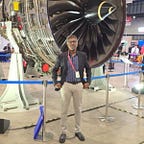Physics Based Machine Learning…
Tremendous progress has been made in numerical methods with partial differential equations (PDE) to solve multi-physics problems in the past 50 years. Yet, modelling & predicting the evolution of in-homogeneous multi-scale systems with classical computational tools still face sever challenges with prohibitive cost & multiple sources of uncertainties.
In addition to it solving inverse problems is often prohibitively expensive requiring complex formulations, new algorithms & elaborate computer codes. Here comes observational data to play a crucial role in the form of Machine Learning, says G M Karniadakis et al in their recently published paper in Nature (Ref). They claim it to be promising to explore massive design spaces, identify multi-dimensional correlations & manage ill-posed problems.
Unlike the data-driven supervised approach, employing differentiable equations of models makes the training aware of physics in its neural. That is a remarkable achievement in the field of machine learning.
Recent works clearly display the accuracy of NN-based surrogate models for real-world, industrial applications & surpass the traditional solvers in terms of runtime. This is crucial to integrate the classical numerical techniques with deep learning methods. In this decade, highly accurate discretization schemes have been developed to solve fundamental physics such as the Navier-Stokes, Maxwell’s, or Schroedinger’s equations.
While the forward solutions help the product analysis, the inverse problems play a crucial role in identifying cause of products failures. Despite the empirical success of physics-informed learning models, little is known about the theoretical foundation of such constrained NNs. A new theory is required to rigorously analyze the capabilities and limitations of physics-informed learning (for example, the learning capacity of NNs), says Karniadakis.
Ref. Physics-informed machine learning — George Em Karniadakis, Ioannis G. Kevrekidis, Lu Lu, Paris Perdikaris, Sifan Wang & Liu Yang, Nature, Vol 3, June 2021
